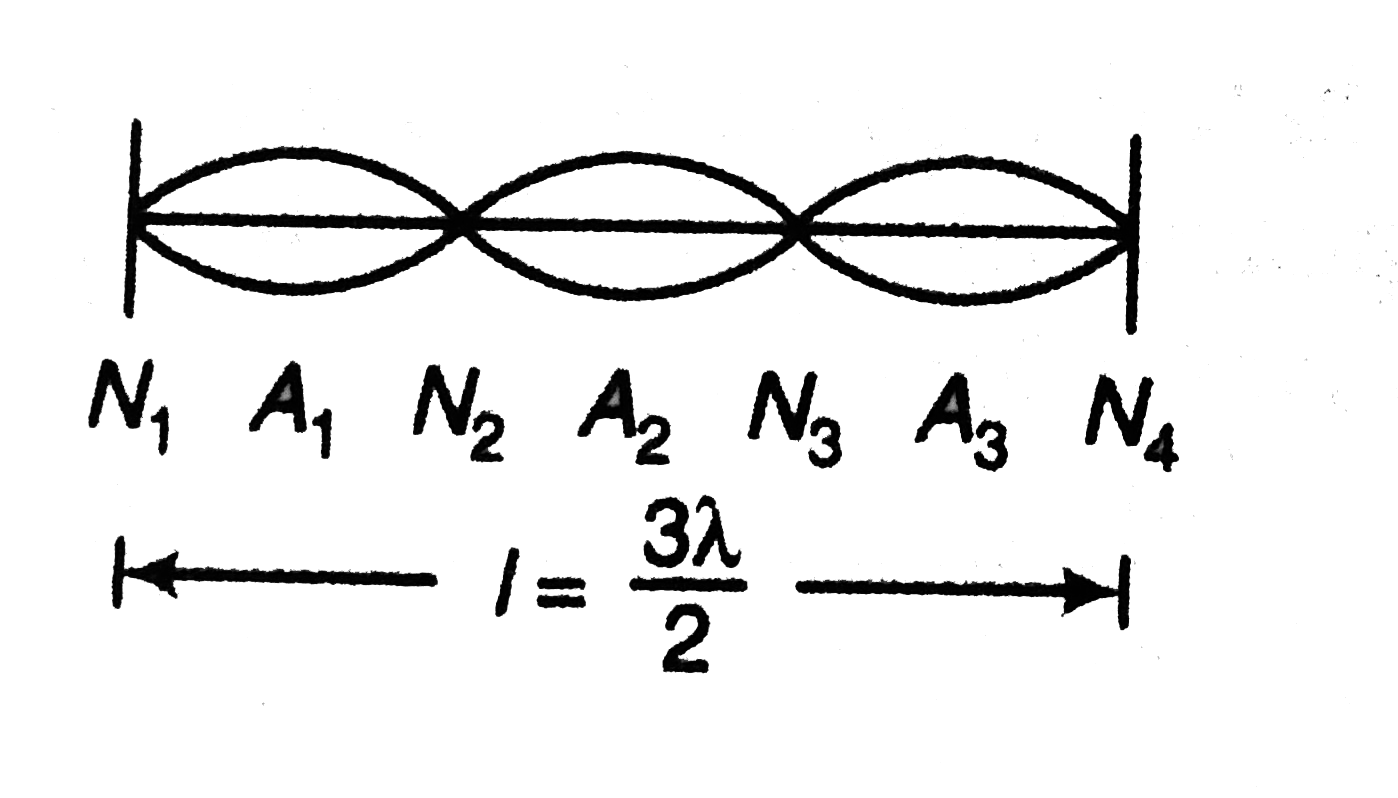Assertion: A wire is stretched and then fixed at two ends. It oscillates in its second overtone mode. There are total four nodes and three antinodes.
Reason: In second overtone mode, length of wire should be , where is wavelength.
If both Assertion and Reason are true and the Reason is correct explanation of the Assertion.
If both Assertion and Reason are true but Reason is not the correct explanation of Assertion.
If Assertion is true, but the Reason is false.
If Assertion is false but the Reason is true.
The correct Answer is:B
Topper's Solved these Questions
- BOOK - DC PANDEYCHAPTER - SUPERPOSITION OF WAVESEXERCISE - Level 1 Objective11videos
SUPERPOSITION OF WAVES
- BOOK - DC PANDEYCHAPTER - SUPERPOSITION OF WAVESEXERCISE - Objective Questions1videos
SUPERPOSITION OF WAVES
- BOOK - DC PANDEYCHAPTER - SUPERPOSITION OF WAVESEXERCISE - Exercise 18.43videos
SUPERPOSITION OF WAVES
- BOOK - DC PANDEYCHAPTER - SOUND WAVESEXERCISE - Exercise 19.74videos
SOUND WAVES
- BOOK - DC PANDEYCHAPTER - THERMOMETRY THERMAL EXPANSION AND KINETIC THEORY OF GASESEXERCISE - Medical entrance gallary30videos
THERMOMETRY THERMAL EXPANSION AND KINETIC THEORY OF GASES
Similar Questions
A stretched wire is oscillating in third overtone mode. Equation of transverse stationary wave produced in this wire is
y=Asin(6πx)sin(20πt)
Here, x is in metres. Find the length of the wire.View SolutionWhere should a stretched wire, held between two fixed supports, be plucked and touched to excite its second harmonic ?
View Solution
Knowledge Check
- Question 1 - Select One
This section contains assertion and reason type questions. Each question has 4 choices (1), (2), (3) and (4), out of which only one is correct.
Assertion (A) A wire is stretched and then fixed at two ends. Wavelength of second overtone mode is 23 rd of the wavelength of first overtone mode
Reason (R) Frequency of second overtone mode is 32 times the 2 frequency of first overtone mode.ABoth Assertion and Reason are correct, Reason Is the correct explanation of AssertionBBoth Assertion and Reason are correct: Reason Is not the explanation of AssertionCAssertion Is correct, but Reason is IncorrectDAssertion Is Incorrect, but Reason is correct - Question 2 - Select One or More
A wire is stretched and fixed at two ends. Transverse stationary waves are formed in it. It oscillates in its third overtone mode. The equation of stationary wave is
y=Asinkxcosωt
Choose the correct options.AAmplitude of constituent waves is A2BThe wire oscillates in three loopsCThe length of the wire is 4πkDSpeed of stationary wave is ωk - Question 3 - Select One
Assertion: If we see the oscillations of a stretched wire at higher overtone mode, frequency of oscillation increases but wavelength decreases.
Reason: From v=fλ,λ∝1f as v = constant.AIf both Assertion and Reason are true and the Reason is correct explanation of the Assertion.BIf both Assertion and Reason are true but Reason is not the correct explanation of Assertion.CIf Assertion is true, but the Reason is false.DIf Assertion is false but the Reason is true.
Where should a stretched wire, held between two fixed supports, be plucked and touched to excite its second harmonic ?
View SolutionA string of mass per unit length 0.2 kg m−1 and length 0.6 m is fixed at both ends such that it has a tension of 80 N. If the string is vibrating in its second overtone mode, then the frequency of the string is
View SolutionIf λ1,λ2,λ3 are the wavelengths of the waves giving resonance in the fundamental, first and second overtone modes respecively in a open organ pipe, then the ratio of the wavelengths λ1:λ2:λ3, is :
View Solutionλ is maximum wavelength of a transverse wave that travels along a stretched wire whose two ends are fixed. The length of that wire is
View SolutionA stretched string of length L fixed at both the ends has nodes, where n>2. What is the length of the string in terms of n and λ ?
View Solution

